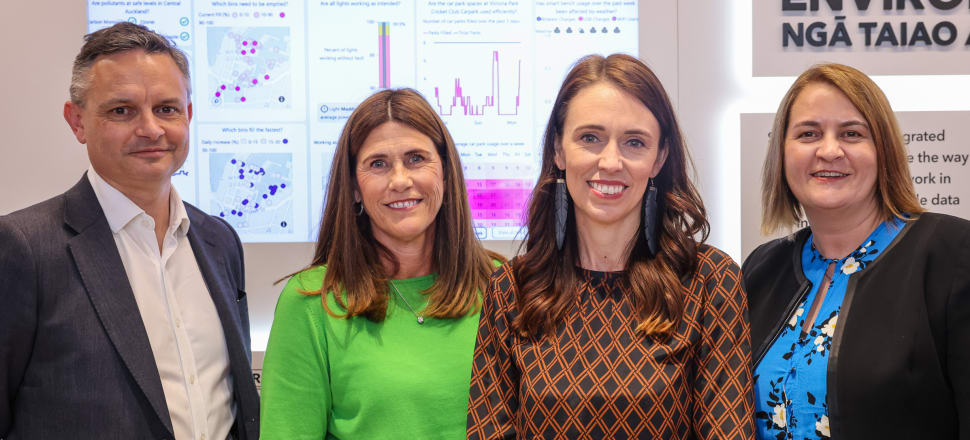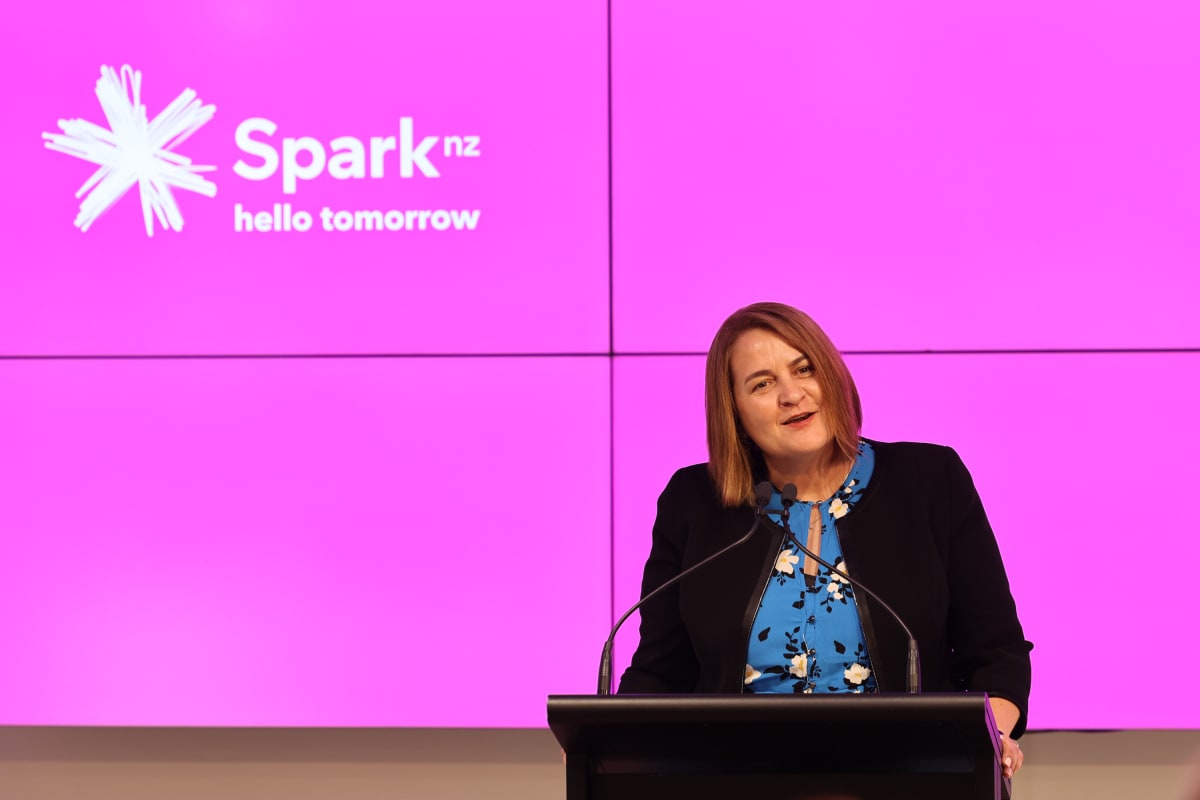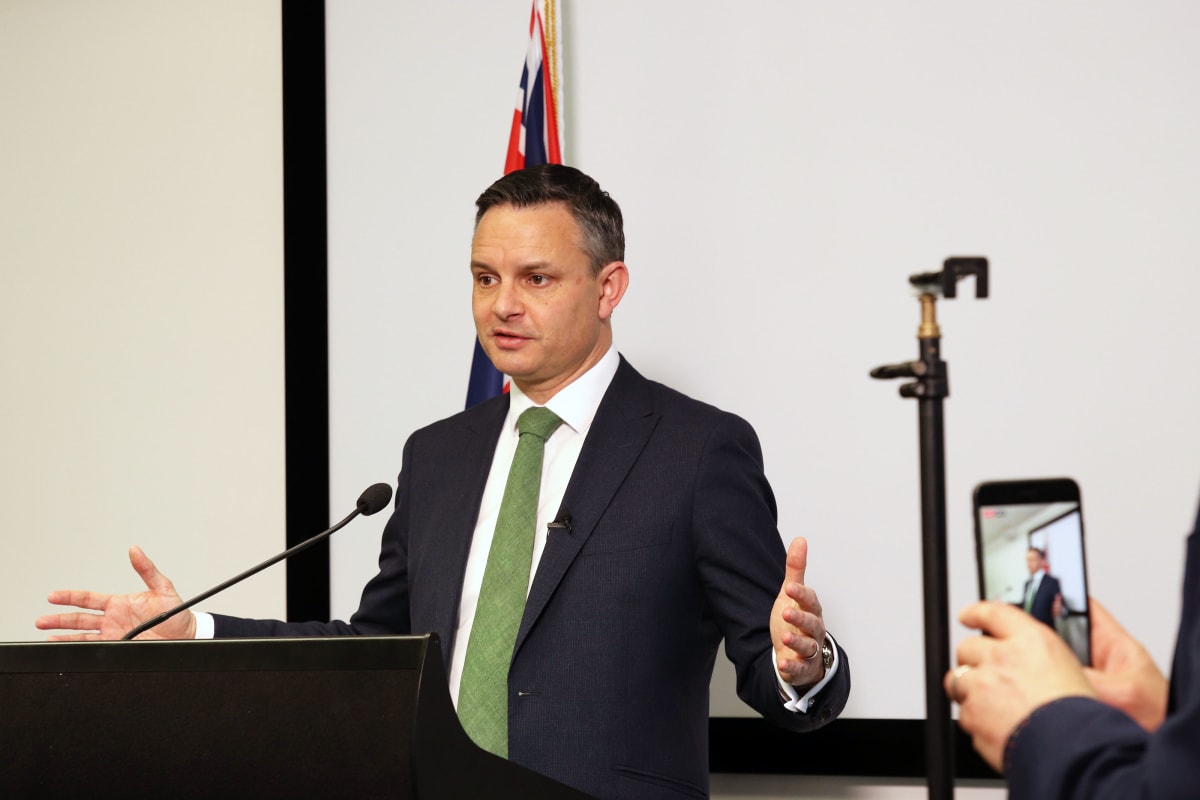
If you were working in the digital technology industry when the Government’s first Emissions Reduction Budgets and Plan came out in May, you could have been forgiven for thinking the sector didn’t exist | Content Partnership
Spark saw the gap and yesterday released a report on how digital technologies could help New Zealand meet its emissions reduction targets. The study, Meeting the climate challenge through digital technology, produced with sustainability consultancy thinkstep-anz, finds 7.2 million tonnes (Mt) of CO2 emissions, or 42 percent of the country’s 17 million tonne reductions needed by 2030, could be found by using enabling digital technologies. Among its recommendations is a proposal for digital technologies to be included in national emissions reduction planning in future.
In her new role as Convenor of the Climate Leaders Coalition, Spark CEO Jolie Hodson achieves two goals with this report: demonstrating both technology industry leadership and calling for cross-sector action to implement its recommendations. This will require the digital technology companies to work closely with organisations in the country’s three largest emitting sectors: transport, where a 2.9 Mt potential reduction was modelled; energy and industry, which saw a drop of 2.4 Mt; and agriculture, a saving of 1.9 Mt.
“Our hope is that by shining a light on the specific opportunities that exist by sector we can support decarbonisation across the economy, and ensure we harness the full potential that digital technology has to offer,” Hodson says.
The opportunities
Examples highlighted in the study include transport where a 1.5 Mt reduction has been calculated through fewer cars on the road, incorporating a 400,000-tonne saving by remote working. This is based on Statistics NZ data that showed in the three months to June 2020, during Covid, almost a million New Zealanders worked virtually from home with the help of technology.
In energy and industry, the report includes an annual 100,000-tonne saving by 2030 from smart charging technology of electric vehicles to shift load to off-peak times.
The primary opportunity seen in agriculture is to provide information to farmers on the drivers of on-farm emissions, to support decision making. The study modelled four precision agriculture use cases, which enabled a reduction in fertiliser and pesticide and improved animal health among other outcomes.

In addition to these, Spark notes there’s still a digital divide in New Zealand that needs closing, and digital equity becomes more important the greater the reliance on technology. Hodson says the transition to a low-emissions economy must be a “just” one.
“One in five New Zealanders may be digitally excluded in some way,” she says.
"Rural and remote connectivity are vital. These are not luxury items, they are necessities.” Prime Minister Jacinda Ardern
The CEO of Telecommunications Users Association, Craig Young, applauds the digital equity proposal, saying a co-ordinated effort across the public and private sector is needed.
“Affording the connection is the hardest part. Perhaps that could be subsidised for those who need it, like the winter power payment. It is time telecommunications was seen as the fourth utility.”
Prime Minister Jacinda Ardern says people shouldn’t have to choose between broadband and bread and agrees rural and remote connectivity is vital.
“These are not luxury items, they are necessities,” she told a group at the launch of the report.
Collaboration required
But making these savings will require collaboration like we’ve never seen it before. Hodson is optimistic the co-operation across utilities required is achievable.
“We think in telecommunications we’ve demonstrated we can work together as a sector effectively to address issues of national significance, including working in partnership with Government. The investment in rural connectivity, with CIP (Crown Infrastructure Partners) and through the RCG (Rural Connectivity Group), is evidence we can work together at scale to get things done.
There is no doubt that collaboration on issues of this kind of complexity can be challenging, but where there’s a will there’s a way. And I think it is fair to say the key businesses understand the time to act is now.”
She sees the Climate Leaders Coalition as a place to drive action, for conversations between sectors as businesses discover how and to what extent they can help each other reach mutual goals.
The numbers
The 7.2 Mt figure includes reductions already accounted for in New Zealand’s Emissions Reduction Plan, as well as additional new reductions the authors have modelled. To put the number in context, earlier this year the World Economic Forum estimated that digital technology applied at scale by the three largest emitting sectors, could reduce their carbon output by up to 20 percent by 2050. Closer to home, Telstra Australia, together with Deloitte Access Economics reported in July, that use of its products and services alone could avoid 4.2 Mt of CO2 by 2030.
thinkstep-anz’s CEO, Barbara Nebel says the findings of new emissions savings are promising.
“There will be some overlap. The [Climate Change] Commission’s report and modelling is based on known technologies and historical practice. The report did not focus explicitly on the role of digital technology. The Spark study has a wider scope and applies a different lens. It includes the opportunities the Commission considered and builds on these using Spark’s knowledge about how digital technologies can help reduce emissions.”
The jury is out on how much it will cost for a successful transition here in New Zealand. The NZ Climate Change Commission has estimated $34bn of new capital will be needed in the next 13 years to finance the change. Last week, in a report commissioned by the electricity sector, Boston Consulting Group called for investment of $42bn by the end of the decade to decarbonise that industry. Either way, some would suggest getting too fixated on the numbers can be a distraction. As Craig Weise, CEO, NZ Green Investment Finance said recently, “Put simply, it’s heaps”.
“One of the biggest challenges when considering the role the digital technology sector can play [in emissions reduction] is the fact... we don’t fit neatly into climate change planning." Jolie Hodson, Spark
The Spark research comes as many sectors of the New Zealand economy are considering what part they can play in reducing emissions, mitigating and adapting to climate change. In December, new climate related disclosure legislation will mandate reporting for more than 200 large, listed companies, insurers, banks, and investment schemes as well as some Crown entities. The regime is intended to drive capital and investment towards low emissions activities. New Zealand banks and financial institutions are already creating new sustainability linked products and see themselves as an enabler of decarbonisation.
The role of enabler is articulated in Spark’s report, and one the digital technology industry has long considered its own. It’s that position in the ecosystem that has required a different lens when it comes to decarbonisation, says Hodson.
“One of the biggest challenges we have seen when considering the role our sector can play is the fact it is a ‘horizontal’ enabler of change across multiple ‘vertical’ sectors. That means we don’t fit neatly into climate change planning, which is by necessity sector based. This was the key driver behind us undertaking this research – providing more visibility over what technology can do.”
As with all sectors trying to decarbonise, the digital technology industry needs to address the footprint of the technology itself. The study by Spark and thinkstep-anz says most of the sector’s emissions come through electricity usage. It suggests that the best way for the sector to shed emissions is to support the transition to 100 percent renewable energy, in addition to ongoing investments in energy efficiency.
The recommendations
The report contains an accompanying draft roadmap for action at the highest level. It calls on the Government to build digital technology into sector strategies for the next national Emissions Reduction Plan and to integrate the sector into the next Climate Risk Assessment and long term Climate Adaptation Plan. It proposes continued co-investment by the public and private sectors into nationally significant digital infrastructure, particularly rural connectivity.
The report highlights the role of the digital technology sector in working alongside other sectors to integrate technology into those plans, as well as its role in exploring disruptive cross-sector opportunities – for example, the emissions reductions that could come from accelerating hybrid working styles, and the wider availability of e-health and e-learning. One of its bolder recommendations is consideration of a national approach to open data and smart system connectivity.

Also speaking at the launch of the report, Minister for Climate Change James Shaw, says it was “an oversight” that the high-tech sector wasn’t part of the first Emissions Reduction Plan and in principle, the Government accepted the need for it to be involved in future.
“We are open to making things go faster,” he says. And he’s excited at the possibility that additional domestic emissions savings might help make up a 100Mt difference between the targets the Climate Change Commission projected for 2030 and the Nationally Determined Contributions agreed in Glasgow last year.
Hodson is pleased the report has been well received by Government, especially the aspects of digital equity and sector involvement in developing the next Emissions Reduction Plan. She says its purpose is to steer broader discourse and existing efforts to decarbonise.
“Our aim in undertaking this research is to guide action – in our own business and sector, and in other businesses and sectors – that will support Aotearoa’s transition to a low carbon and climate resilient future.”
Spark is a foundation partner of Newsroom.co.nz. Read the report here







